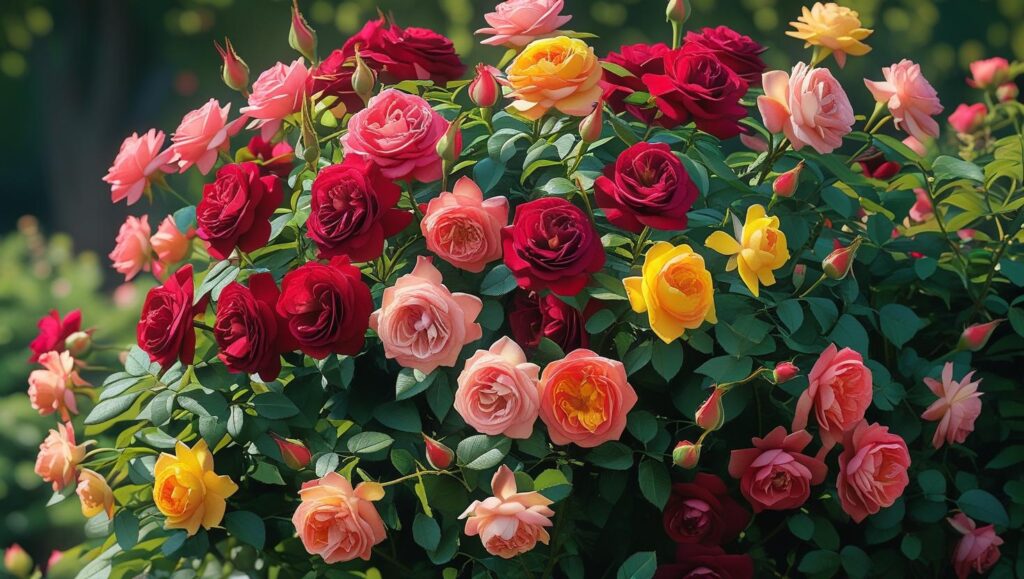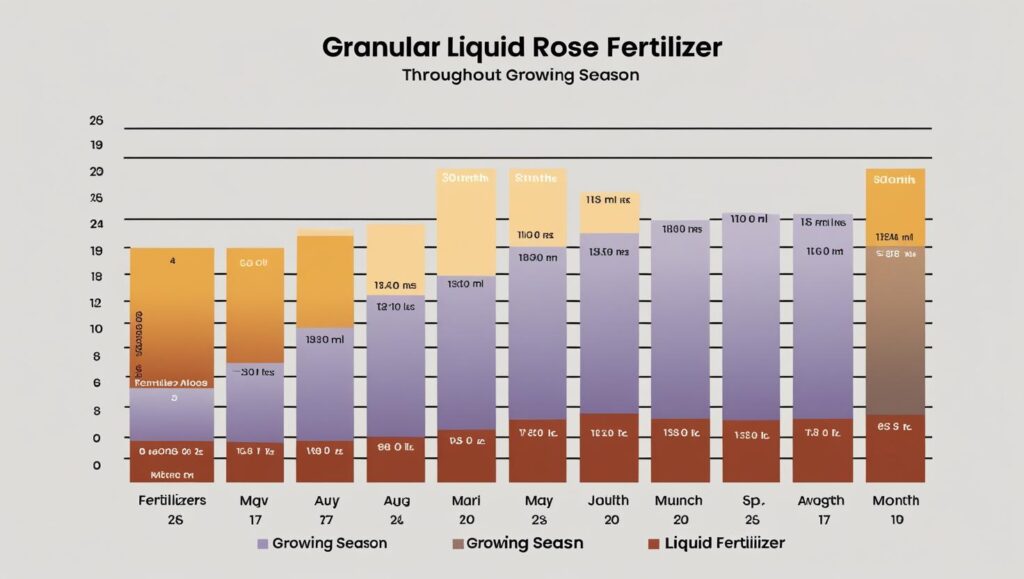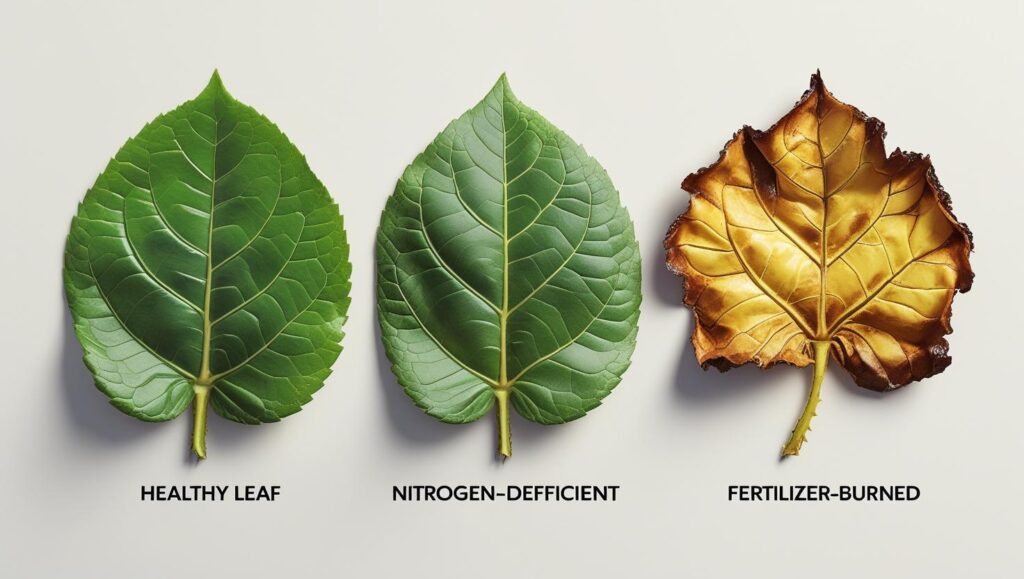For gardeners worldwide, achieving vibrant, healthy roses hinges on a crucial question: how many times should you fertilize a rose plant? According to horticultural experts and leading botanical institutions, the answer is not a single number, but a strategic schedule based on rose type, climate, and soil health. Most repeat-blooming roses benefit from two to four applications during the growing season, a practice that ensures vigorous growth and prolific flowering.

Rose Fertilization Schedule
| Key Factor | Recommendation |
| Initial Feeding | Apply first fertilizer dose as new growth appears in early spring. |
| Mid-Season Feeding | Feed every 2-6 weeks, or after each major bloom cycle. |
| Final Feeding | Cease all fertilization 6-8 weeks before the first expected frost. |
| New Plants | Wait until after the first bloom cycle to fertilize newly planted roses. |
The Expert Consensus on Fertilization Frequency
The general advice from horticultural authorities is that roses are “heavy feeders” requiring consistent nutrition to perform their best. However, the specific frequency depends heavily on the type of fertilizer used and the plant’s environment.
“To encourage vigorous growth and abundant bloom, hybrid tea, floribunda, and grandiflora roses should be fertilized two or three times a year,” states guidance from the Iowa State University Extension. This typically involves an application in early spring post-pruning, another during the first major bloom, and a final feeding in mid-summer.
For those using water-soluble or liquid fertilizers, the frequency increases. The Indianapolis Rose Society, an affiliate of the American Rose Society (ARS), suggests that after an initial granular feeding, “the suggestion is to use [water-soluble fertilizers] at two-week intervals.” This “little and often” approach provides a steady stream of nutrients, particularly for roses grown in containers where nutrients leach out more quickly with watering.
How Many Times to Fertilize a Rose Plant: A Seasonal Guide
A plant’s nutritional needs change with the seasons. A successful rose fertilizer schedule aligns applications with the plant’s natural growth cycles.
Early to Mid-Spring: The first feeding is critical to jump-start the season. Experts recommend applying a high-nitrogen fertilizer just as new leaves begin to emerge. “Begin fertilizing when new leaves emerge,” advises Garden Design magazine, citing expert input. This initial dose fuels the development of healthy foliage, which is the engine for flower production.
Late Spring and Summer: This is the peak performance period for repeat-blooming roses. As the plant expends significant energy producing flowers, it requires nutrient replenishment. “Continue to feed every 2 to 4 weeks during the growing season depending on the type of fertilizer used,” is the common recommendation. Many gardeners time their second application to coincide with the end of the first major flush of blooms to encourage the next wave.

Late Summer and Early Autumn: The primary goal in late summer is to prepare the plant for winter dormancy, not to encourage new growth. Experts universally advise stopping fertilization well before winter arrives. “Do not fertilize after July 31,” warns the Iowa State University Extension for its climate. A more general rule from multiple sources, including Jackson & Perkins, is to stop feeding 6 to 8 weeks before the average first frost date for your area. Applying fertilizer too late can stimulate tender shoots that will be damaged or killed by frost, potentially harming the entire plant.
Choosing the Right Nutrients and Avoiding Pitfalls
The numbers on a fertilizer bag (N-P-K) represent Nitrogen, Phosphorus, and Potassium, the three primary macronutrients.
- Nitrogen (N) promotes lush, green foliage.
- Phosphorus (P) supports strong root development and flower production.
- Potassium (K) enhances overall plant vigor and resistance to stress and disease.
While a balanced fertilizer like 10-10-10 is often recommended, the American Rose Society notes the importance of soil testing. A soil test can reveal specific deficiencies or excesses, allowing for a more tailored approach.
Over-fertilization is a significant risk and can be more damaging than under-fertilization. Signs of “fertilizer burn” include browning or yellowing leaf edges, leaf drop, and stunted growth. “Always water before and after applying fertilizer,” advises the Indianapolis Rose Society. This helps prevent root burn and ensures nutrients are distributed evenly.

Special Considerations for Different Roses
Not all roses are created equal, and their feeding needs reflect this.
- Container Roses: Plants in pots require more frequent fertilization, often every two to four weeks with a diluted liquid feed, according to Wes Harvell, a rosarian at Jackson & Perkins, in a Martha Stewart article. Nutrients are leached from the potting mix with each watering.
- Newly Planted Roses: Experts caution against fertilizing new bare-root or young roses too soon. “Wait at least six weeks after planting new roses before fertilizing them to allow time for the roots to establish,” Harvell advises.
- Old Garden Roses: Many older varieties and species that bloom only once per season have much lower nutritional needs. A single application of a balanced or organic fertilizer in the spring is often sufficient.
Ultimately, observation is a gardener’s most powerful tool. As a consensus article from the American Rose Society states, “Plants will tell you if they are thriving. They will also tell you when they are struggling. Make observations.” A plant with vibrant growth and plentiful blooms is a clear sign that its nutritional needs are being met.
How Often Should You Watering a Peace Vine? A Comprehensive Guide
